Twiz: The Story of an Adorable Rescue Weasel
by Robert Fuller
When I first met Twiz she was two weeks old. She squirmed around in the palm of my hand with her head wobbling from side to side, squeaking in distress. She weighed just 10.6 grams, was roughly the size of a child’s finger and was blind, deaf and totally helpless. A fine coat of blond fur barely covered her pink body. I have watched a wild weasel raise her kits from birth and I follow their daily lives via cameras hidden in purpose-built weasel habitats in my garden. So I have come to know a lot about this species.
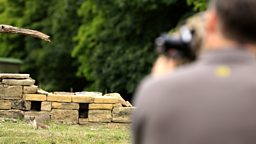
In recent years I have used my knowledge to help rehabilitate orphaned weasels. But up until this point I had never tried to raise one quite so young.
up until this point I had never tried to raise one quite so young
Twiz was handed to me by Andrew Gray of Mustelid Rescue UK. She arrived at my home and gallery in Thixendale, North Yorkshire, in June 2018. Wild weasel kits are remarkable among young mammals in that they possess the ability to drop into a torpid state when their parent is out hunting. Their heart rate drops and they go into a deep sleep, a bit like animals in hibernation do. This is one reason why so many orphaned weasel kits are found still alive.

Rehabilitation works better when rescued animals are surrounded by their own kind. They get to learn the same survival tactics by playing among themselves as a wild litter naturally would. It would be very difficult for me to replicate this natural interaction; however hard I tried! Twiz was too small and young to be paired with other rescued weasels I was currently looking after. She needed far more intensive care.
Just a drop of milk on the lungs could drown her or leave her at risk of pneumonia.
I contacted my local wildlife rehabilitation owner who is highly skilled at raising small mammals and we often collaborate on rescue projects. Over the years we have put dozens of animals and birds back into the wild: including owls, kestrels, hedgehogs, stoats, and of course, weasels.
The owner took over this tiny weasel’s care with admirable dedication, feeding her via a syringe every hour during the day and every two hours at night - actually placing the incubator by their bedside and waking to feed the weasel every time she squeaked for food.
Feeding a kit as young as Twiz requires considerable skill. Just a drop of milk on the lungs could drown her or leave her at risk of pneumonia.
The first few days were critical and I was happy to bow to the rehabilitation owner’s considerable experience at this precarious time.
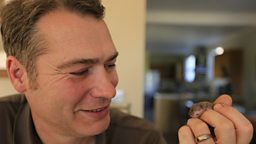
Twiz was given her name because in the Yorkshire dialect a weasel is referred to as a ‘Hedge Twizzle’.
Twiz was given her name because in the Yorkshire dialect a weasel is referred to as a ‘Hedge Twizzle’.
The biggest change in Twiz, however, was that she was now eating meat. This explained the huge growth spurt. Since I had followed the lives of a family of wild weasels in my garden I knew that wild kits will suck on raw flesh as young as six days old. By two weeks old they are actively eating meat. At just over a month old, Twiz’s eyes were now open and she was running around.
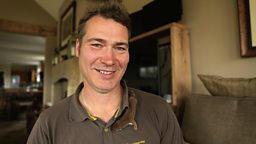
At this stage Twiz was eating dead mice. Instead of just placing these into her box, I pulled them along on a string. This would teach her that that food doesn’t stay still and that she would have to work to get it. A weasel needs to eat half its body weight a day.
A weasel needs to eat half its body weight a day.
I was careful to be as hands-off as possible, but sometimes when I heard her cry out or squeak for attention I couldn’t help but give in and go and see what she wanted. She would greet me with an excited chitter: it is one of the best sounds in the natural world.
But, there was still a very high hurdle to jump before she was ready to be released. She had been raised by hand from such a young age that it was going to be difficult to get her to separate from me and survive unaided.
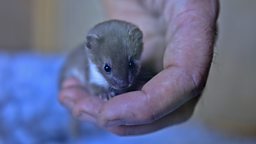
The wildlife rehabilitation owner looked after Twiz while I went away on holiday and was very strict about not handling Twiz so that it would be easier to release her into the wild on my return. But then Twiz’s behaviour took an alarming downturn. She stopped eating, lost weight and cried for attention every time she heard anyone approaching. This was surprising since although weasels grow up in tight family units, at between 9 and 12 weeks old they separate and go on to lead solitary lives. Twiz was almost 9 weeks old and I had expected her to be more independent by this stage. On my return, I decided that a slow release back into the wild was the best option for Twiz.
Weasels are the smallest carnivore in the world and are so minute they can fit through a wedding ring.
Twiz was now fully grown, but still very small at just 65 grams. Weasels are the smallest carnivore in the world and are so minute they can fit through a wedding ring.
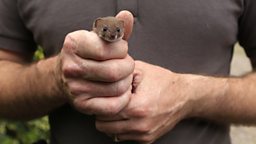
I built Twiz a new enclosure alongside some other rescued weasels’ outdoor release pen. Wire netting separated the two enclosures and I installed cameras so that I could watch how the weasels’ responded to each other. After a few days I was confident enough to put all the kits into the same enclosure. By now I had been completely hands off for 10 days, but Twiz was still displaying worrying signs of attachment and tried to get my attention every time I went into the enclosure to feed her.
Weasels are so tiny that there is a long list of animals that will hunt them down, including kestrels, owls, foxes, stoats (their closest relatives) and even cats.
Then the day came to release the weasels. It is difficult to decide when they are definitely ready.
Weasels are so tiny that there is a long list of animals that will hunt them down, including kestrels, owls, foxes, stoats (their closest relatives) and even cats.
And of course if they have been hand reared, they don’t have the natural wariness that keeps their wild counterparts alive.
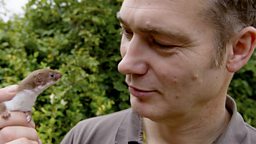
I opened the door to let the weasels out. It was an emotional moment. These tiny creatures had made up so much of my time during the last few months and I desperately wanted my efforts to have been worthwhile.
It was a long night and I lay awake for most of it, worrying. I was up early the following morning and checked the overnight footage from the surveillance cameras in my garden.
They rushed around the garden, giddily exploring every nook and cranny. I watched them all evening. They were still dashing around at midnight. Although they looked so happy, their carefree play unnerved me. I would have been happier if they were a little more wary about being out in the wild.
It was a long night and I lay awake for most of it, worrying. I was up early the following morning and checked the overnight footage from the surveillance cameras in my garden.
I spotted the two male weasels on film, but not Twiz. I went into the back garden to investigate. As soon as I stepped outside I heard the birds alarm calling. I spotted the two males playing chase in the hedge and then, as I was topping up the bird feeders, I spotted Twiz. She was playing with some fir cones on a dwarf conifer.
I was so relieved that they had all made it through their first night. Twiz spotted me and rushed over, chittering around my feet. It was hard to walk away as she kept darting under my feet - only just dodging being accidentally trampled on.
Some you win, some you lose.
But although I was glad she was alive, I was disappointed that she would still rather be with me than the two male weasels. I crouched down and she rushed into my hands whickering excitedly.
I walked her back to her enclosure and put her back in whilst I composed my thoughts. I didn’t feel confident about leaving her out for another night while she was still so attached to me.
Some you win, some you lose.
That evening I heard a weasel squeaking in distress. I rushed over to the meadow that adjoins my back garden. The tall grass was shaking. I knew that a weasel was being attacked. I rushed in, parting the grass to see if I could find out what was going on.
A streak of ginger caught my eye. It was a stoat, fleeing the scene. It had clearly attacked one of the weasels. The air was thick with weasel stink bomb.
I have an amazing companion in Twiz and I will continue to learn a lot about weasels through her
After that I only saw one male weasel in the garden. The other had obviously died from its injuries. I was gutted: he had only survived for 24 hours in the wild. The only consolation I had was that he would have died as a small kit if I hadn’t given him this chance.
But it was losing this male that made me decide in the end to keep Twiz. I was disappointed not to have succeeded in my task of releasing her into the wild, but I have an amazing companion in Twiz and I will continue to learn a lot about weasels through her - and of course she is a stunning model for my paintings.

N.B. Twiz lived under Rob’s care for a further 13 months until her passing in September 2019
